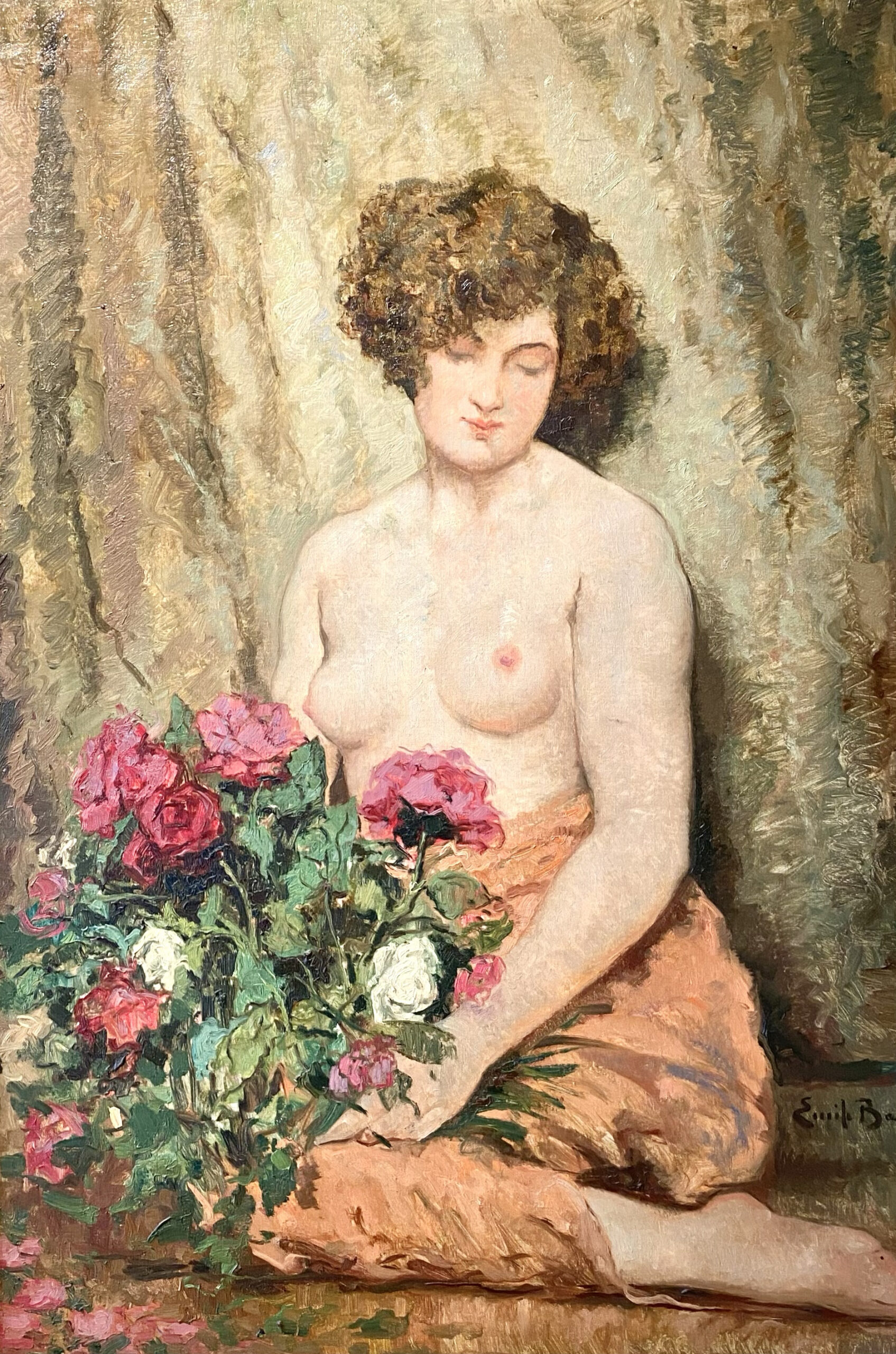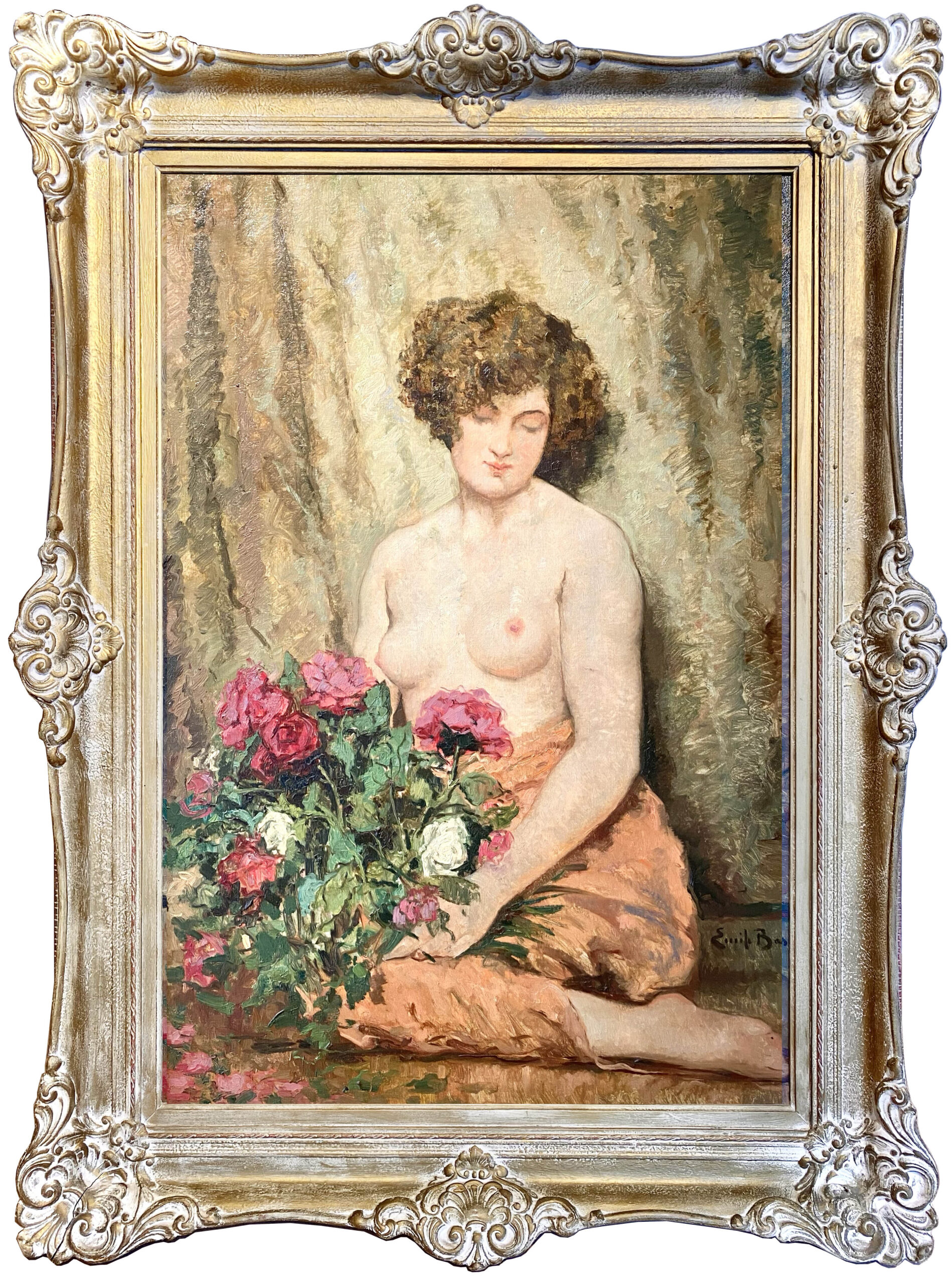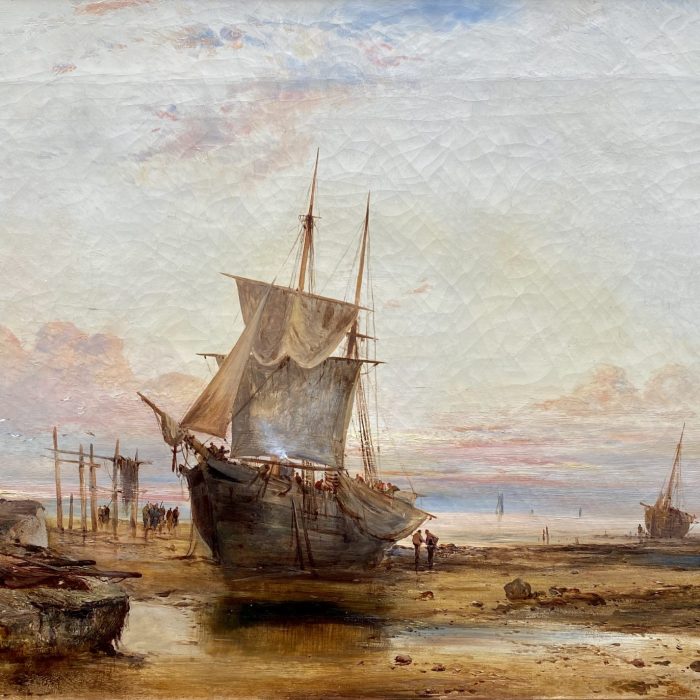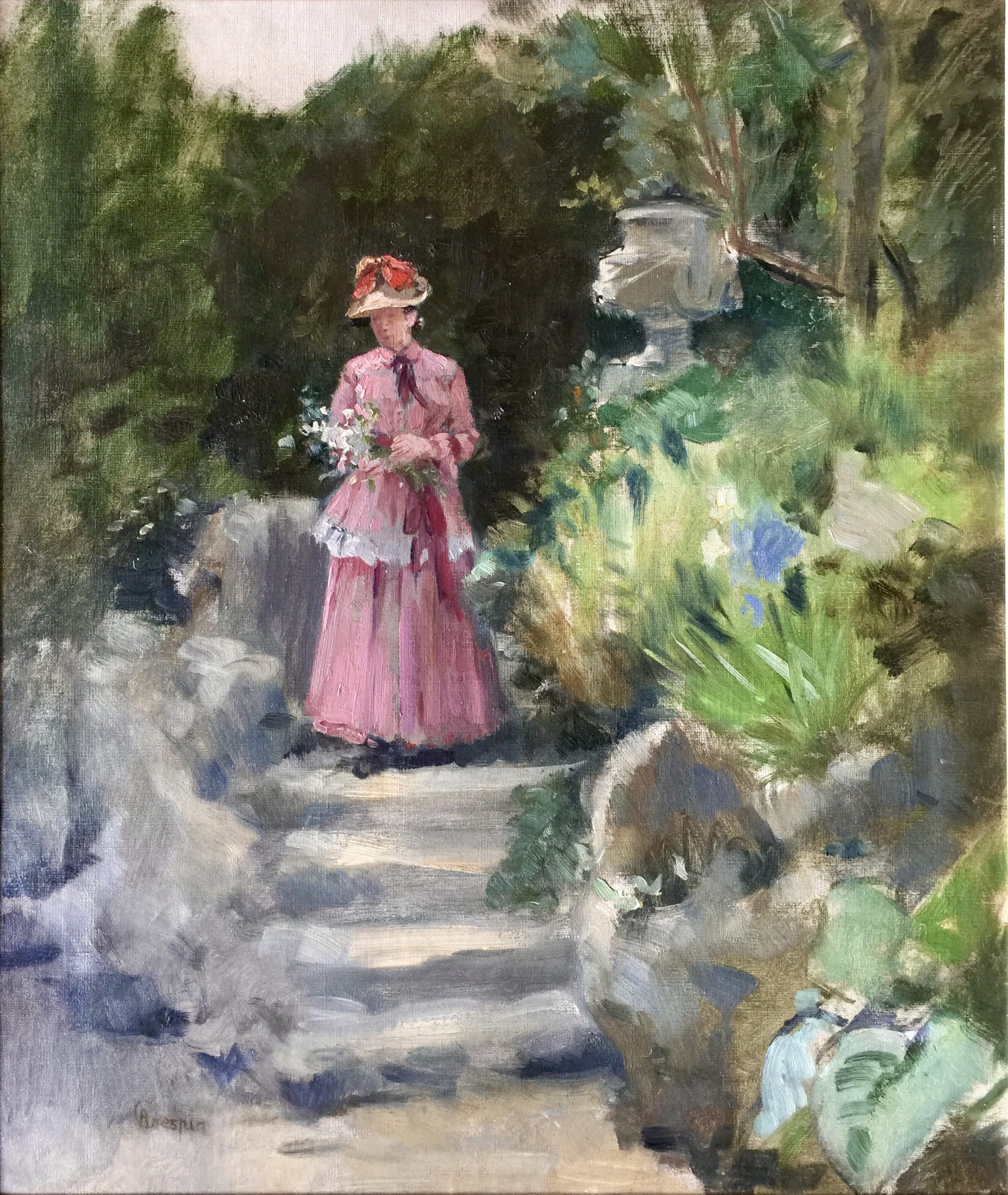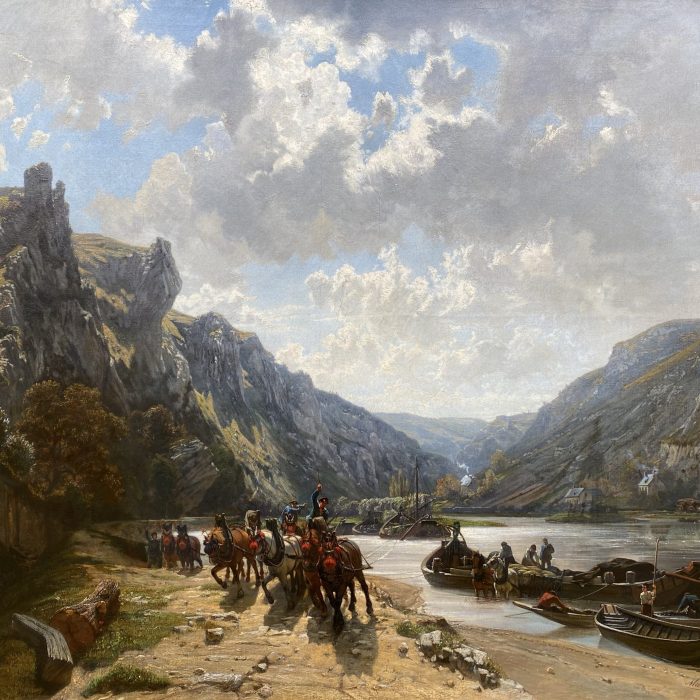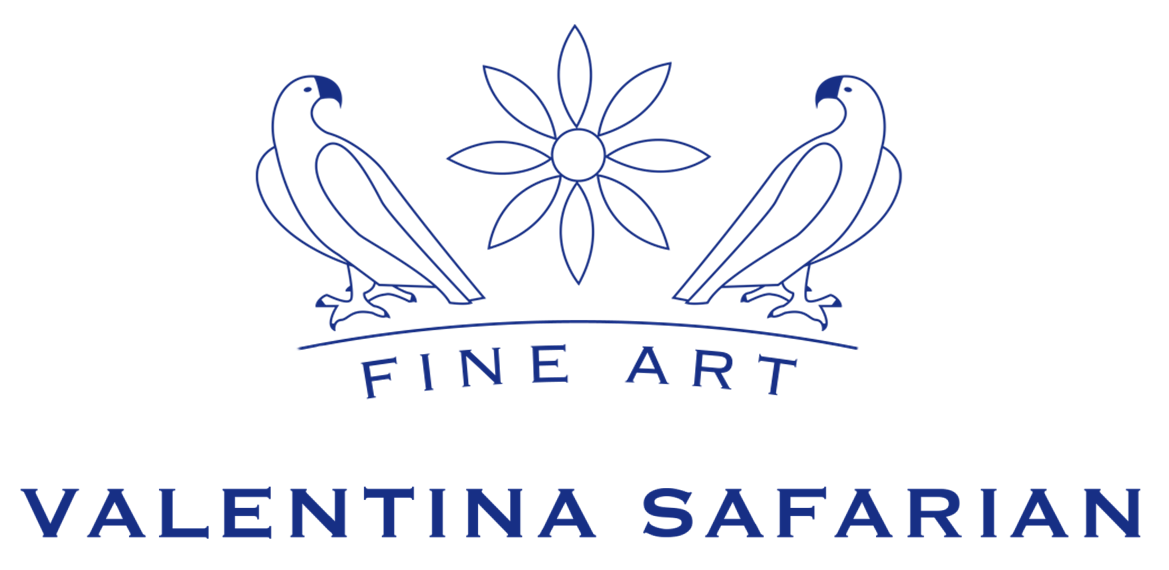Brussels 1879 – Paris 1953
Belgian Painter
Nude with Roses
Émile Charles Robert Baes (Emile Baes) was a painter, draughtsman, pastel artist, printmaker, illustrator, art historian, and writer. Born in Brussels on 12 November 1879 to Charles Baes, a metal engraver and stained glass painter from Lokeren, and Héléne Marie Gomber from Menen, Baes grew up in an artistic environment that would profoundly shape his career.
He studied at the Royal Academy of Fine Arts in Brussels under the guidance of Neoclassicist painter Joseph Stallaert (1895–1901) and later continued his studies in Paris with Alexandre Cabanel, a leading exponent of French Academic painting, and Léon Bonnat, a celebrated naturalist portraitist.
Baes initially debuted in an academic style with historical scenes, portraits, female figures, and character studies. He would later gain widespread acclaim as a painter of figures and nudes, especially for his refined, eroticized boudoir and bedroom scenes. His work reflects influences from Paul Flaubert, Symbolism, and Orientalism, and he also produced landscapes, still lifes, interiors with elegant women, genre scenes, and Orientalist compositions. Skilled in pastels and etching, he demonstrated technical mastery across multiple media.
As a writer and illustrator, Baes contributed to contemporary literature, producing illustrated works such as Les Dieux sadiques (1948) and Études de femmes. He also authored the art historical study La physionomie du Christ dans l’art (1912), examining the representation of Christ in art history, and illustrated works of contemporary authors, including Marcel Kienné de Msafeot. His iconography often explored the theme of femme fatale, portraying figures such as Salome, Messalina, and Cleopatra.
Baes married Maria Françoise Andréa Furnelle on 30 December 1903 in Saint-Gilles. Their daughter Rachel, born in 1912, became a prominent Surrealist painter.
A successful artist, Baes acquired in 1918 a residence with two artist studios in Ixelles, designed in the Belgian Art Nouveau style by architect Alban Chambon. From 1920 to 1940, he hosted weekly Sunday salons, inviting friends and artists from local and Parisian circles. He enjoyed royal patronage, painting multiple portraits of King Albert I of Belgium, including a work he presented to France in 1932, which is now displayed at the Musée des Invalides.
Baes exhibited widely across Europe, particularly in Brussels and Paris, where he participated in galleries such as Princesse d’Amour (Le Roy) and the Paris Salon, earning gold medals and accolades. He traveled extensively to Germany, Italy, Morocco, and Egypt, gathering inspiration for his Orientalist works. He was a member of the Société des gens de lettres in Paris, a Grand Officier of the Légion d’Honneur, and a member of the Institut de France. In 1936, he served as a jury member for Miss France, reflecting his engagement with broader cultural circles.
Émile Baes passed away on 3 January 1953 in the 16th arrondissement of Paris. His works are held in prominent public and private collections worldwide, celebrated for their technical mastery, elegance, and evocative representation of human form and character.

